Qian Guo
$\mathbfΦ$-GAN: Physics-Inspired GAN for Generating SAR Images Under Limited Data
Mar 04, 2025Abstract:Approaches for improving generative adversarial networks (GANs) training under a few samples have been explored for natural images. However, these methods have limited effectiveness for synthetic aperture radar (SAR) images, as they do not account for the unique electromagnetic scattering properties of SAR. To remedy this, we propose a physics-inspired regularization method dubbed $\Phi$-GAN, which incorporates the ideal point scattering center (PSC) model of SAR with two physical consistency losses. The PSC model approximates SAR targets using physical parameters, ensuring that $\Phi$-GAN generates SAR images consistent with real physical properties while preventing discriminator overfitting by focusing on PSC-based decision cues. To embed the PSC model into GANs for end-to-end training, we introduce a physics-inspired neural module capable of estimating the physical parameters of SAR targets efficiently. This module retains the interpretability of the physical model and can be trained with limited data. We propose two physical loss functions: one for the generator, guiding it to produce SAR images with physical parameters consistent with real ones, and one for the discriminator, enhancing its robustness by basing decisions on PSC attributes. We evaluate $\Phi$-GAN across several conditional GAN (cGAN) models, demonstrating state-of-the-art performance in data-scarce scenarios on three SAR image datasets.
Construction and optimization of health behavior prediction model for the elderly in smart elderly care
Dec 03, 2024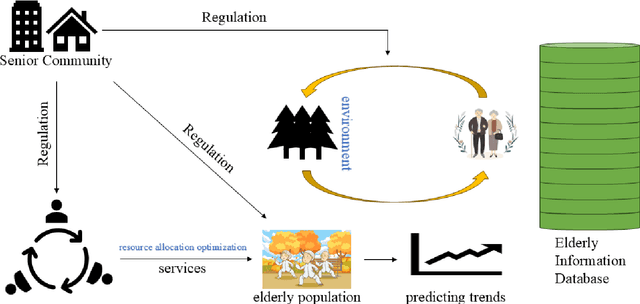

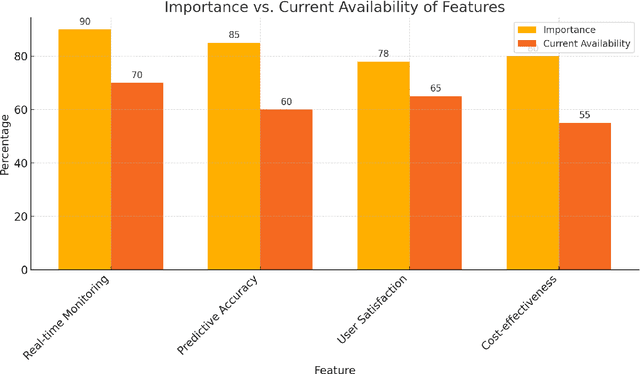

Abstract:With the intensification of global aging, health management of the elderly has become a focus of social attention. This study designs and implements a smart elderly care service model to address issues such as data diversity, health status complexity, long-term dependence and data loss, sudden changes in behavior, and data privacy in the prediction of health behaviors of the elderly. The model achieves accurate prediction and dynamic management of health behaviors of the elderly through modules such as multimodal data fusion, data loss processing, nonlinear prediction, emergency detection, and privacy protection. In the experimental design, based on multi-source data sets and market research results, the model demonstrates excellent performance in health behavior prediction, emergency detection, and personalized services. The experimental results show that the model can effectively improve the accuracy and robustness of health behavior prediction and meet the actual application needs in the field of smart elderly care. In the future, with the integration of more data and further optimization of technology, the model will provide more powerful technical support for smart elderly care services.
Extreme Low-Light Imaging with Multi-granulation Cooperative Networks
May 16, 2020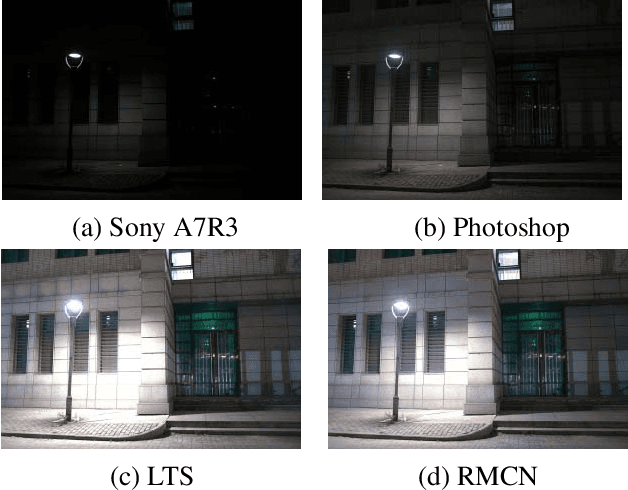
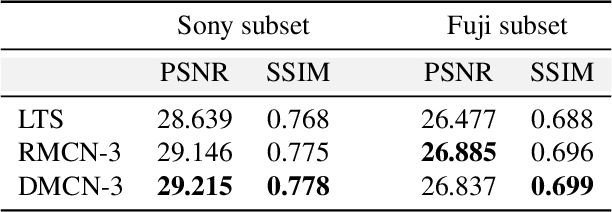
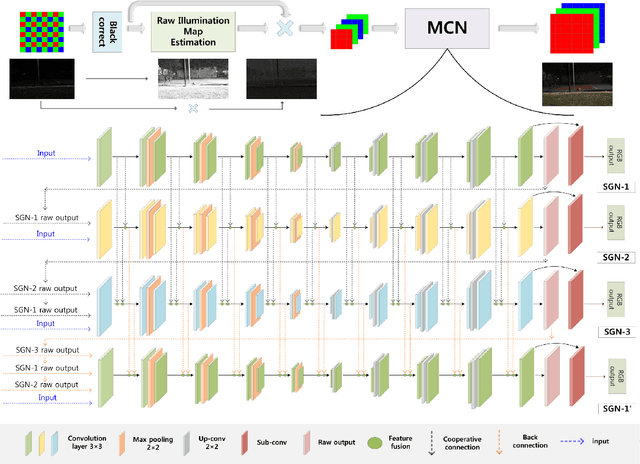

Abstract:Low-light imaging is challenging since images may appear to be dark and noised due to low signal-to-noise ratio, complex image content, and the variety in shooting scenes in extreme low-light condition. Many methods have been proposed to enhance the imaging quality under extreme low-light conditions, but it remains difficult to obtain satisfactory results, especially when they attempt to retain high dynamic range (HDR). In this paper, we propose a novel method of multi-granulation cooperative networks (MCN) with bidirectional information flow to enhance extreme low-light images, and design an illumination map estimation function (IMEF) to preserve high dynamic range (HDR). To facilitate this research, we also contribute to create a new benchmark dataset of real-world Dark High Dynamic Range (DHDR) images to evaluate the performance of high dynamic preservation in low light environment. Experimental results show that the proposed method outperforms the state-of-the-art approaches in terms of both visual effects and quantitative analysis.
Logic could be learned from images
Aug 06, 2019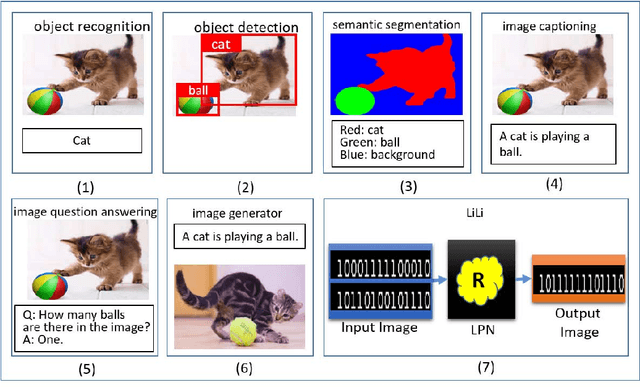
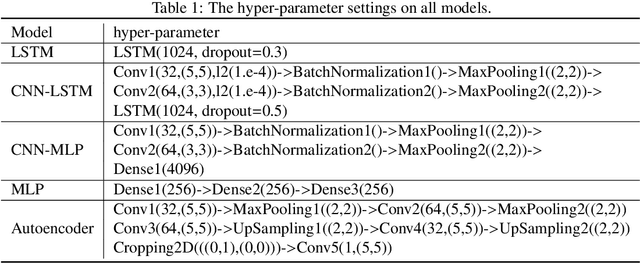
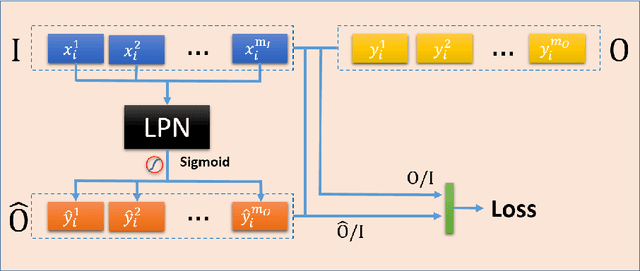
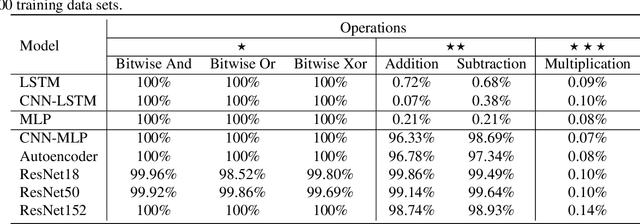
Abstract:Logic reasoning is a significant ability of human intelligence and also an important task in artificial intelligence. The existing logic reasoning methods, quite often, need to design some reasoning patterns beforehand. This has led to an interesting question: can logic reasoning patterns be directly learned from given data? The problem is termed as a data concept logic (DCL). In this study, a learning logic task from images, just a LiLi task, first is proposed. This task is to learn and reason the relation between two input images and one output image, without presetting any reasoning patterns. As a preliminary exploration, we design six LiLi data sets (Bitwise And, Bitwise Or, Bitwise Xor, Addition, Subtraction and Multiplication), in which each image is embedded with a n-digit number. It is worth noting that a learning model beforehand does not know the meaning of the n-digit number embedded in images and relation between the input images and the output image. In order to tackle the task, in this work we use many typical neural network models and produce fruitful results. However, these models have the poor performances on the difficult logic task. For furthermore addressing this task, a novel network framework called a divide and conquer model (DCM) by adding some prior information is designed, achieving a high testing accuracy.
Deep Learning Inversion of Electrical Resistivity Data
Apr 10, 2019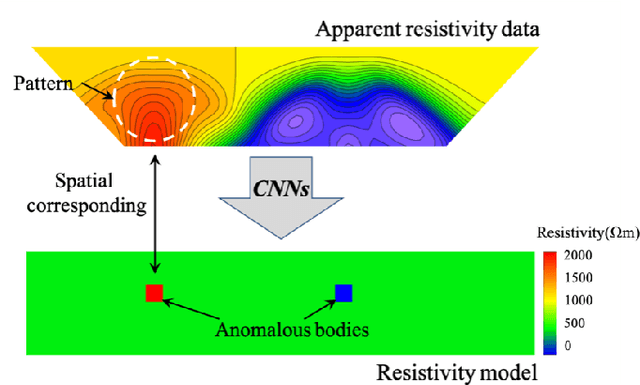
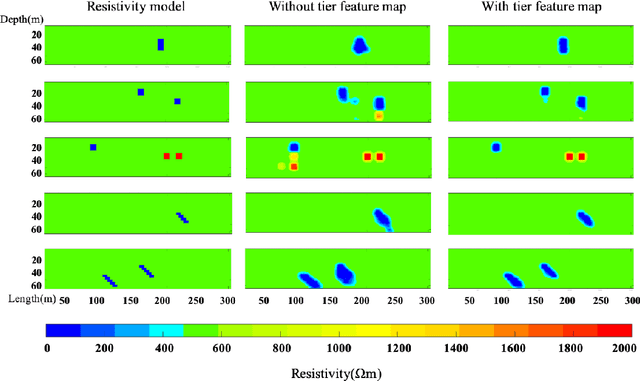
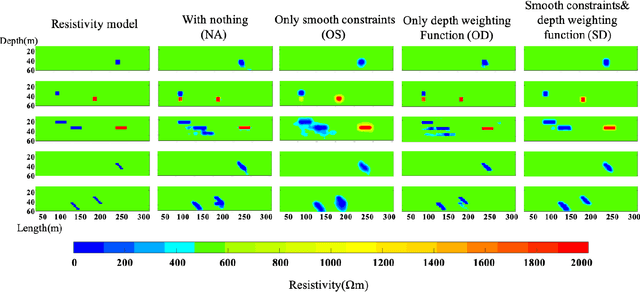
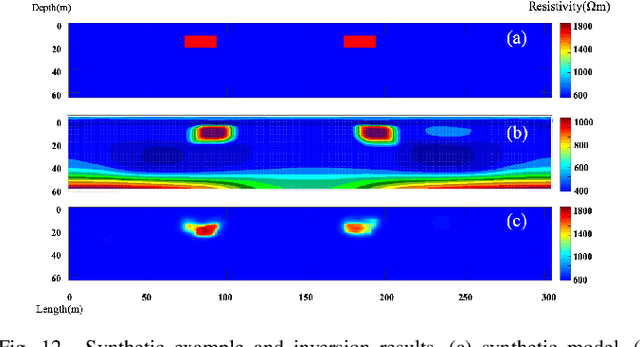
Abstract:The inverse problem of electrical resistivity surveys (ERS) is difficult because of its nonlinear and ill-posed nature. For this task, traditional linear inversion methods still face challenges such as sub-optimal approximation and initial model selection. Inspired by the remarkable non-linear mapping ability of deep learning approaches, in this paper we propose to build the mapping from apparent resistivity data (input) to resistivity model (output) directly by convolutional neural networks (CNNs). However, the vertically varying characteristic of patterns in the apparent resistivity data may cause ambiguity when using CNNs with the weight sharing and effective receptive field properties. To address the potential issue, we supply an additional tier feature map to CNNs to help it get aware of the relationship between input and output. Based on the prevalent U-Net architecture, we design our network (ERSInvNet) which can be trained end-to-end and reach real-time inference during testing. We further introduce depth weighting function and smooth constraint into loss function to improve inversion accuracy for the deep region and suppress false anomalies. Four groups of experiments are considered to demonstrate the feasibility and efficiency of the proposed methods. According to the comprehensive qualitative analysis and quantitative comparison, ERSInvNet with tier feature map, smooth constraints and depth weighting function together achieve the best performance.
 Add to Chrome
Add to Chrome Add to Firefox
Add to Firefox Add to Edge
Add to Edge